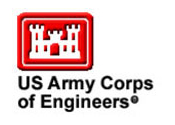
U.S. Army Corps releases report on valuation of commercial fisheries in the U.S. waters of the Great Lakes
CHICAGO - The U.S. Army Corps of Engineers (USACE) released May 1 the “Commercial Fisheries Baseline Economic Assessment - U.S. Waters of the Great Lakes, Upper Mississippi River, and Ohio River Basins” (Commercial Fisheries Report), an Interim Product of the Great Lakes and Mississippi River Interbasin Study (GLMRIS). The report is available on the GLMRIS website at http://glmris.anl.gov/.
“This baseline report provides a thorough summary of the most recently available commercial fisheries data in the GLMRIS study area,” said GLMRIS Chicago Area Waterway System Project Manager Dave Wethington. “We will use this and other baseline reports to further our understanding of existing conditions, as well as to help forecast impacts from potential aquatic nuisance species transfer.”
USACE will host a conference call May 10 at 10 a.m. (CST) for interested parties to ask questions on this report. Call-in information is: USA Toll-Free: United States: 866-233-3842; International: 651-291-9113; Participant Access Code: 246867
The average harvest level in the U.S. waters of the Great Lakes is estimated at 19.3 million pounds of commercially-caught fish with an associated average value of $22.5 million. Similar analysis estimates 10 million pounds with an associated value of $4 million for the Upper Mississippi River Basin and approximately 1.4 million pounds with an associated value of about $2 million in the Ohio River Basin.
The average harvest level is calculated from the most recent five years of state-licensed and tribal commercial fishing annual harvest data available.
Two complimentary fisheries baseline assessments will be released later this spring: subsistence fisheries and pro-fishing tournaments. An assessment of recreational angling in the GLMRIS study area is anticipated at the end of 2012.
The purpose of GLMRIS is to evaluate the range of options and technologies available to prevent aquatic nuisance species (ANS) transfer via aquatic pathways between the Great Lakes and Mississippi River basins. The final study will consider possible ANS controls to prevent ANS transfer, analyze the impacts each ANS control may have on significant natural resources, as well as the existing and forecasted uses of the lakes and waterways within the study area, and present alternatives to prevent ANS transfer between the basins. If necessary, the alternatives will include mitigation measures for impacted waterway uses and significant natural resources.
